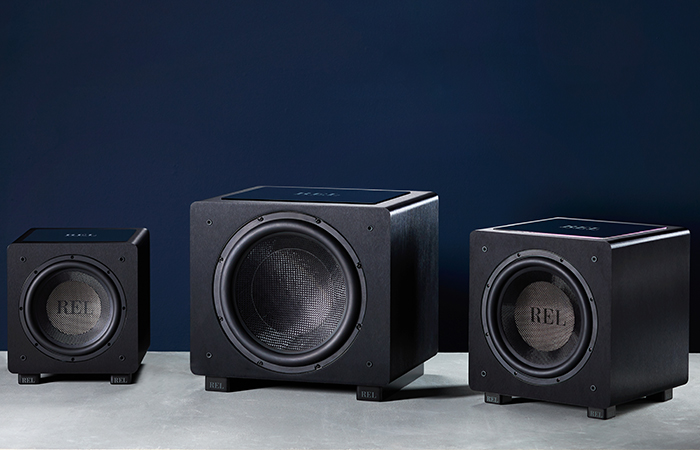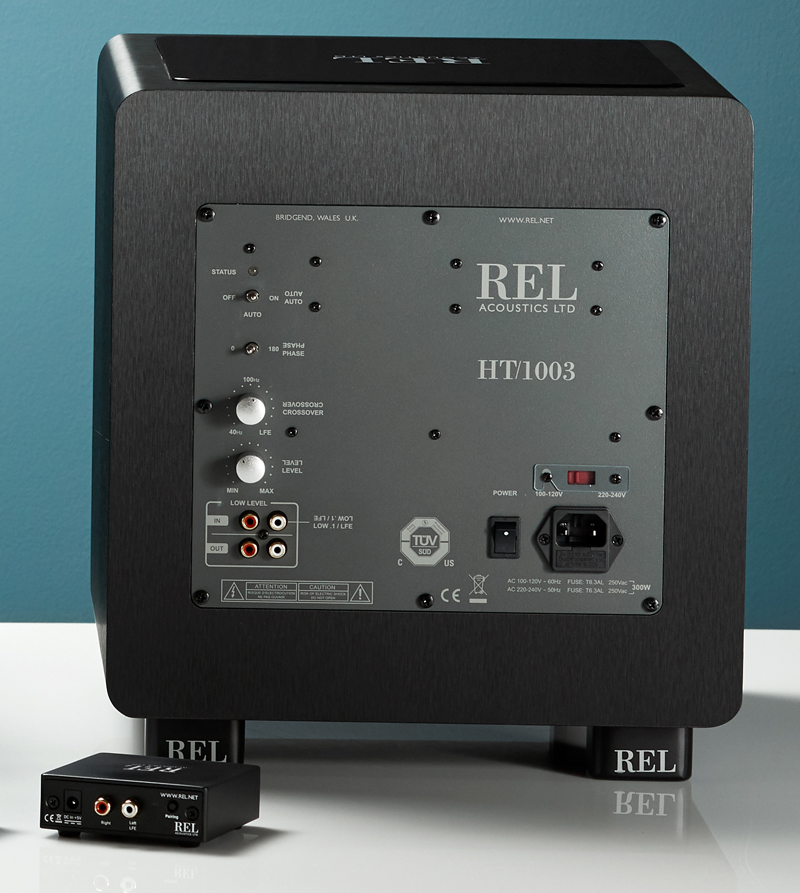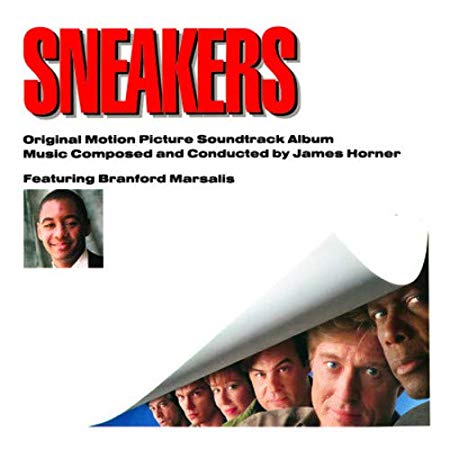Blog
Getting What You Pay For
How to get top performance from your new HT
The new HT’s have begun to receive critical acclaim and eager dealers quickly figured out that these were a whole new type of REL; slightly larger, much more powerful amplifiers than any previous affordable REL and, with only low level and traditional .1/LFE inputs–all using plug and play RCA-RCA connections–they make the perfect sub for both newbies and those very experienced theater devotees seeking a higher level of performance from their theater setups. And they’re a stone-cold bargain with the model HT/1003 selling for around what a Tzero does and the powerful HT/1205 coming in not far off the price of a T/5i.

With Father’s Day looming, a lucky bunch of Dads are going to wake up to find one of our new Home Theater Serie HT units wrapped up with a bow to say thanks for all the drop offs at school, teaching how to throw a baseball, softball or football, helping to balance a bike until their son or daughter got the hang of balancing and all the myriad things Dads do to help their kids along the way. But will those joyous Dad’s get the most from their HT?
However, on a recent trip to check out how a few of our authorized dealers who were selling our HT’s really well were doing, we were dismayed to find out that every demo we checked out was setup completely incorrectly. The result was these units were outputting less than half of what they were capable of. The stores were selling HT’s because they know we produce good products that they could trust to be reliable, beautifully finished for the category and sound “good”. But they were missing completely what the Serie HT can deliver.
All this is a long-winded way of getting around to saying anyone who buys a Serie HT and doesn’t invest a little time learning how to properly setup their sub is missing out on at least 50% of what we build into each and every Serie HT. Take setup and dial-in seriously and you’ll be rewarded with rich, fast subs that blend with the main system almost as well as our legendary classic RELs that have a special High Level Input. Ignore setup and tuning and they’ll merely be good, which in our world is simply not good enough.

Going back to the dealers we visited, was it just because they didn’t know what the HT/1003 and 1205’s were capable of? Partly, but it’s also because theater suffers from a syndrome that’s unfortunate and it has its roots in two different sides of the same thorny, silly issue: older high end 2-channel sales people continue, for the most part, to look down their noses at theater, call it a generational prejudice. Those salespeople came of age in the music-rich ‘70’s and grew up in the service of music. Also, early theater technology was pretty limited and so older salespeople quickly grew to adopt an affect of disdain toward theater (“I suppose it’s ok if you’re into that sort of thing”).
Meanwhile, many people, especially families, welcomed theater with open arms because it’s simply great fun. Sitting around on a Friday night with the kids and a big bowl of popcorn when they’re young gives way to the teen years where it remains a way for parents and kids to remain connected one night a week before they drift away completely to their friends and other sorts of fun that don’t involve parents. But families that enjoy doing things with each other have a way of remaining stronger and closer than those that are allowed to drift away without any effort to find common experiences that bind them together with memories and laughter. I guess Father’s Day around the corner has me reflecting, but let’s jump into the basics of serious setup for theatre that make these experiences so rich. And note, detailed setup and tuning videos are available on our blog or YouTube channel.
First, let’s just identify the few controls you’ll want to get right:
- Phase (0 degrees or 180 degrees)
- Crossover (20-120 Hz, continuous rotary control)
- Level (off-Full Max Level continuous rotary control over 30 degree arc)
Start off using music, specifically the CD of the soundtrack to the movie Sneakers from way back in the early ‘90’s (still available on Amazon for those markets that have access to it). Track #4 is still the best cut for dialing-in phase and crossover we’ve ever found. For level, well it works a little different for theatre…
1. Phase: with your HT plugged in and turned on (use “Auto Standby” if you must but our preference is to leave in the Always On mode as HT’s draw very little power at idle and not constantly turning any amplifier on and off will allow it to last longer before the power supply capacitors break down.) begin playing cut #4 at a moderately loud level. Your main speakers and REL should be working, nothing else, so your system should be in 2.1 mode (or Music/CD mode) assuming the use of an audio video receiver or AV processor. With cut 4 playing, pay close attention to the large concert bass drum being lightly struck in a continuous rhythm.
Now, flick the Phase Switch and listen to which direction produces the louder output. You may need to perform this several times before you can trust which setting is correct but because we use a slightly steeper than standard filter in these units, it should quickly become apparent which direction produces louder output. Leave it alone from this point on. It’s producing higher output because its phase (is the woofer pushing out on a bass transient or is it sucking inward?) is the same as the main speaker’s orientation which is, by definition, correct.
2. Crossover: This is why we built our crossover control to always be available to tune the .1/LFE-most subs don’t offer this. This control is what determines where the REL’s higher frequencies roll off. This is where it’s important to pay attention: because theatre special effects often have no relevant context there is NO memory base of reality you possess to determine if something sounds real (what is the sound of a photon torpedo exploding in the utter vacuum of deep space?) it is critical to use Cut 4 of Sneakers to set crossover point. Without this I guarantee you that you will wind up setting your crossover far too high and risk limiting how loud the REL will play.
Why? Because as we all know, theater special effects can be quite loud–some 15-16 db louder than the average signal. If you are crossed over too high, you’re wasting power supply capacity playing signals that are far too high in frequency to sound realistic anyway, you’re left with less to reproduce the deep bass you’ll need for those effects. Worse, you’ll create boomy upper bass that sounds awful and muddies up dialogue on screen. In those stores I mentioned, they were all running the crossover way up at 3 o’clock. When we were done, it was correctly set to about 9:30 and seamlessly supported dialogue resulting in just the right amount of richness to support male voices with making them boomy.
Pro Tip:
Set the built-in crossover in your receiver or processor to 200 Hz in order to send as wideband a signal as possible so that the REL’s crossover has enough information to sculpt with. Do NOT make the mistake of leaving the factory crossover of 80Hz for this reason.
3. Gain: When setting gain for theatre .1/LFE, it’s quite a bit different than matching gain on the High Level Control of a classic REL for perfect blend. Why? Because the .1 channel is its own dedicated signal developed specifically for special effects. For those old enough to remember making their own cassette tapes back in the day, the technique is identical. Basically, you’ll want to select the loudest, most dramatic explosion-fest you’ve ever experienced on screen. Use the last chapter of Transformers (any of them will do), Chapter 14 of the original Ironman works too. Play the system as loud as you or that it can handle without distorting (without the sub in circuit).
Then unplug your speakers or turn off your power amp and play it again with only the sub; turning the sub up until it just begins to distort then backing off just a little.
Now turn the amp on, or plug your speakers back in and run the whole system. By doing this, you know that every part of your system can handle the biggest signals it’s likely to ever experience and you won’t have to wonder if you’ll run into a speaker (or sub) destroying moment down the road.
That’s it, the whole event will take less than thirty minutes if you’re efficient and you’ll be rewarded with a theatre that just plain rocks. Enjoy.
BTW, the stories I mentioned at the outset? Phase was wrong, placement was off by 6”-12” (move your HT’s around and locate positions where it simply plays louder) and the crossover was set to 3 o’clock versus 9:30. Ten minutes later, they were destroying the room and playing at least twice as loud with far more bottom end and an aliveness to the sound that was missing before.
Enjoy the music, and Father’s Day for all the Dads out there.
John Hunter











